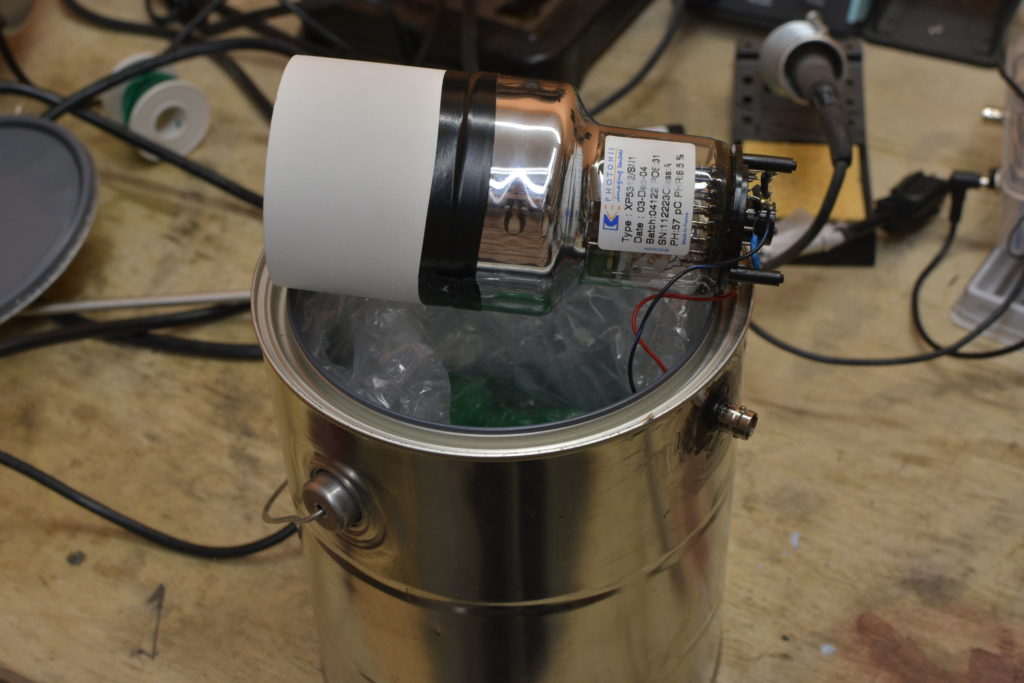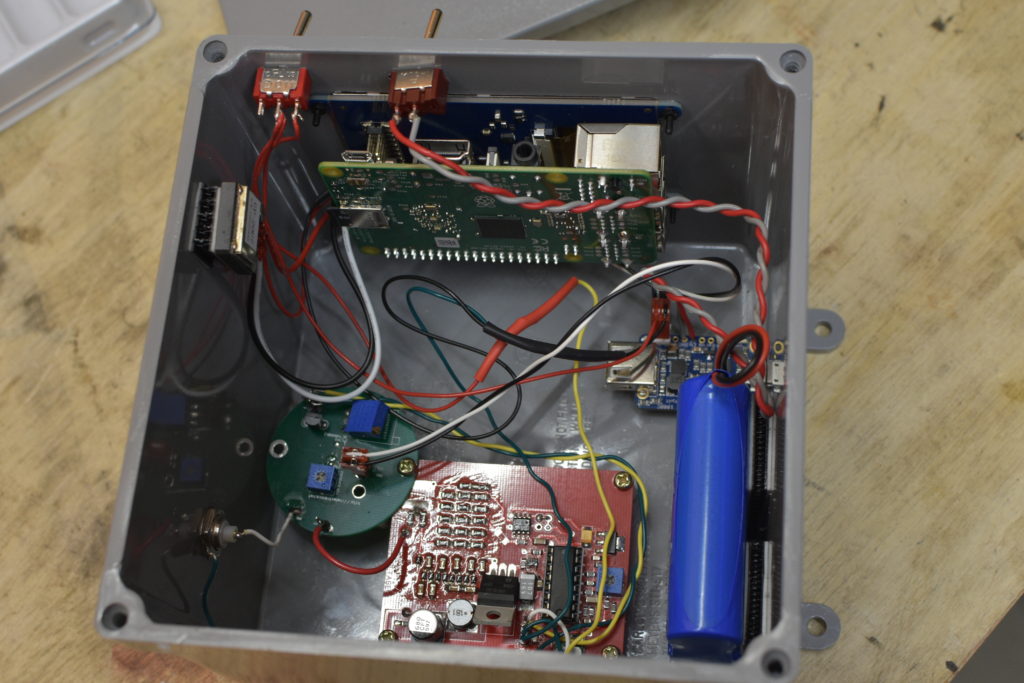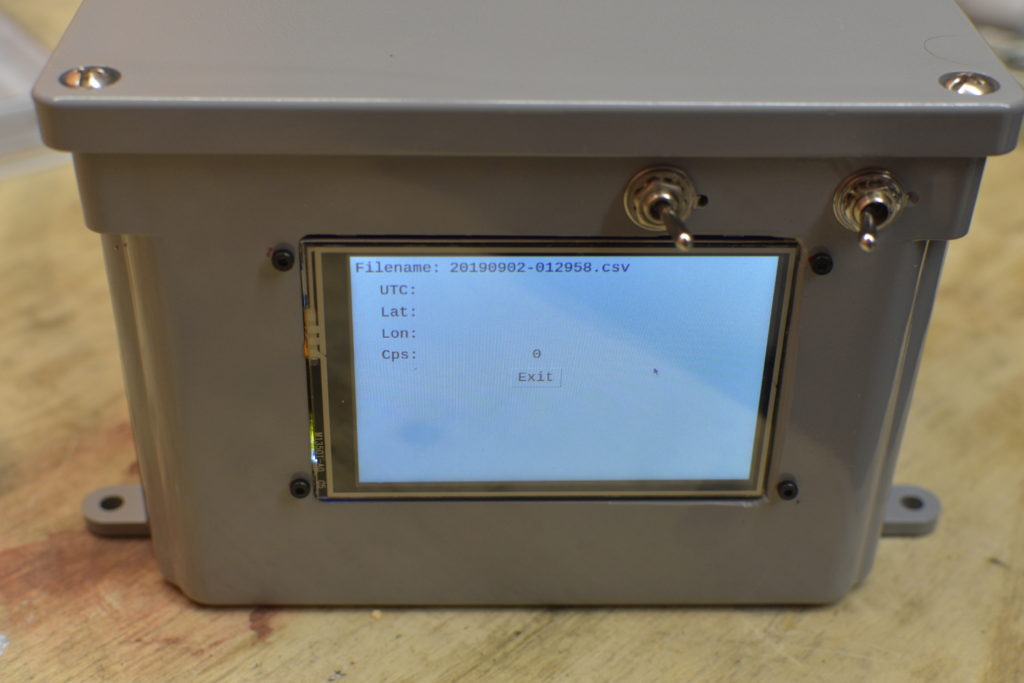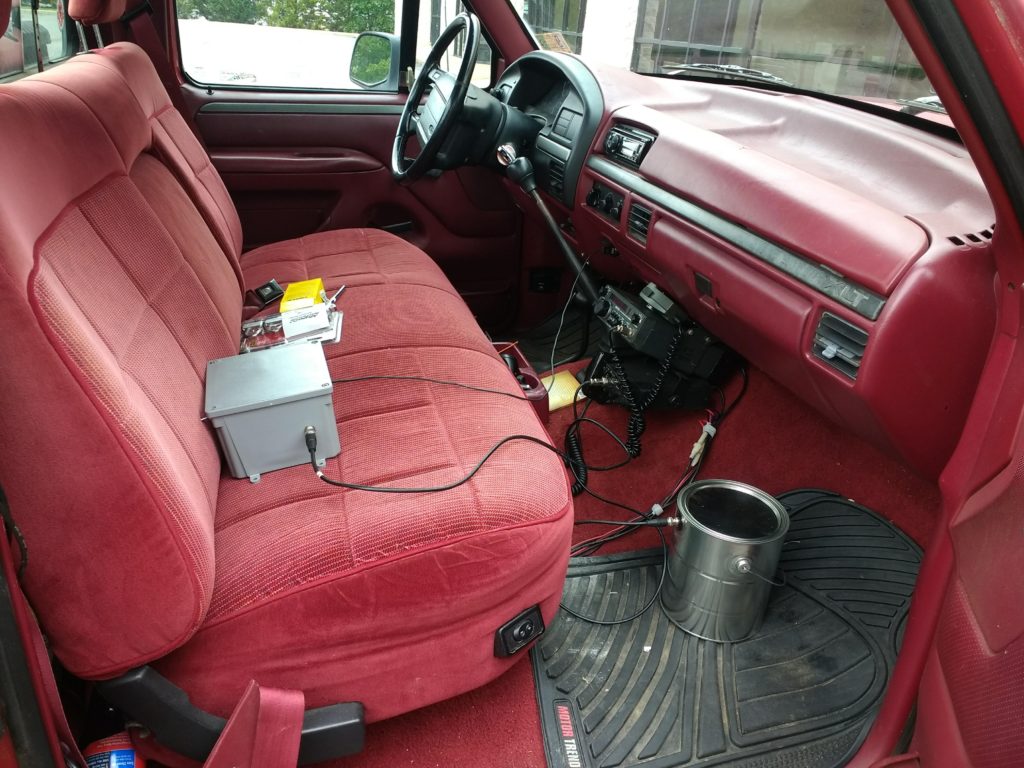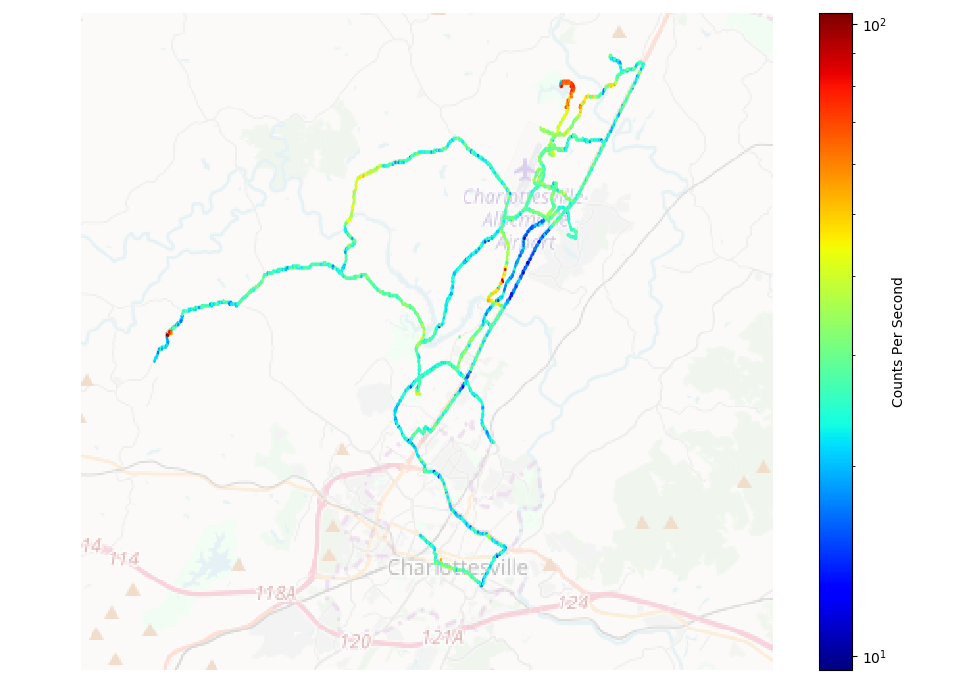I just posted a new YouTube video about I project I’ve been working on for some time. It’s a scintillation detector coupled to a Raspberry Pi that lets you make maps of background radiation levels. You can leave it in your car as you drive around town and then upload the data over WiFi when you get home.
Here is the parts list for most of the major components:
https://www.ebay.com/usr/iradinc
3″ Diameter BC-412 – $69
XP5312 PMT – $65
https://rhelectronics.net/store/
RH Electronics High Voltage Supply – $40
RH Electronics Counter Preamp – $30
https://www.adafruit.com/
Raspberry Pi – $35
Touchscreen – $45
Battery/UPS – $50
https://Sparkfun.com
GPS – $18 (https://www.sparkfun.com/products/13740 )
Total: $352
You will also need a paint can to enclose the PMT and block out all light as well as an enclosure for the electronics. I used a gray plastic electrical box I picked up at Lowes.
I have a GitHub repository with the code for the Pi, the code to plot the data, and some data files: https://github.com/abstractspace/RADLOGGER
It is really messy, but should help you get started. The file main.py plots the csv files and counts.py file runs the GUI on the Raspberry Pi.
Currently to get the data off the Pi I let it connect to my WiFi. I then ssh into it and push the new .csv files to Git. I want to come up with a long term solution going forward that is more automated and automatically uploads the data when in range of your WiFi and then powers everything down. This would mean you could just put in in your car and pretty much forget it.
